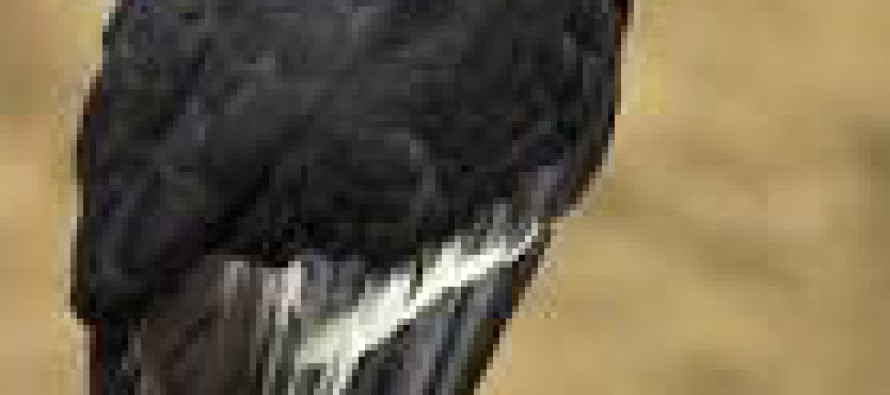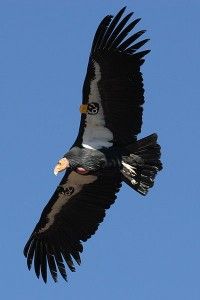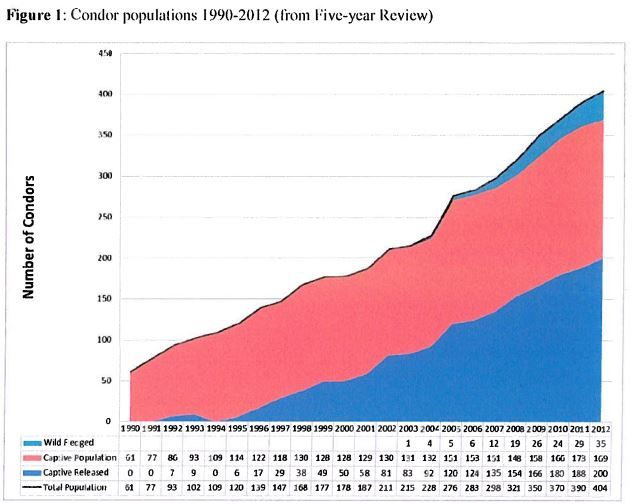Condors thriving before new CA lead ammo ban

 The California Condor is flying back. This majestic giant, with a wingspan stretching nearly 10 feet, had been nearing extinction as recently as two decades ago.
The California Condor is flying back. This majestic giant, with a wingspan stretching nearly 10 feet, had been nearing extinction as recently as two decades ago.
But the recent report from the U.S. Department of the Interior found that the Condor Recovery Program “continues to increase the number of condors in the wild in Arizona, Utah, California and Baja California.
As of the end of July, according to the report, “there are 429 condors in the world of which 224 are free flying (California 123, Arizona/Utah 71; Baja California 30).”
The number is up from only about 55 condors as recently as 1990. The following graph shows the steady increase, which is expected to continue.
Bullets
Concern has been advanced in California that lead from hunters’ bullets has been killing off the condors. The federal condor report was submitted from the U.S. Department of the Interior to the California Fish and Game Commission on Oct. 29. That was 18 days after Gov. Jerry Brown signed into law Assembly Bill 711, by Assemblyman Anthony Rendon, D-South Gate. The bill bans using lead bullets in hunting in California beginning in 2019.
According to the bill’s language:
“California passed a successful law preventing the use of lead ammunition in condor habitat. However, because these restrictions only apply in certain areas or to the hunting of particular species, many species of wildlife remain threatened by the use of lead ammunition and more protections are needed. These successes have shown us how to extend protection from lead poisoning to other wildlife.”
In his signing statement, Brown wrote:
“Lead poses a danger to wildlife. This danger has been known for a long time. … Since 2007, California has prohibited it in the eight counties within the condor range. In fact, at least thirty other states regulate lead ammunition in some manner.”
However, the federal report found that the increase in the condor population began well before a 2007 ban by of the use of lead bullets by hunters in condor areas. The above graph clearly shows a steadily increasing trend line that did not jump upward beginning in 2007.
One hypothesis the paper offers is that “there are other sources of lead in the environment that condors may be accessing, including 5 individual condors apparently ingesting chips of lead-based paint on a fire tower.”
The authors point to a recent study that found 8 percent of the birds had exposure to lead that “did not match the isotopic signature of ammunition, background levels, or paint, indicating an unidentified source of lead in the environment.”
Caring for condors
Of the “other sources” of threats to the condors, micro trash especially can be deadly. According to the Santa Clarity Community Hiking Club, which has taken the lead in cleaning condor habitats:
“Micro-trash consists of little bits and pieces of glass, metal and plastic. The Condors are attracted to these items because they sparkle and shine. They eat it, and feed it to their chicks. Both the adults and chicks die. In the last 5 years, we have picked up more than 5,000 lbs of micro-trash in the forest.”
Indeed, it is human involvement that has saved this mighty symbol of California. Every condor is tagged, as you can see in the picture of the condor at the top of the page.
According to the federal study, every condor is captured once a year — twice a year in California — examined by veterinarians and if necessary treated with medicines or more invasive procedures. “Virtually all condors are equipped with VHF telemetry units, and each site regularly tracks the condors that come from that site,” according to the study. Some condors even “are equipped with GPS units,” so they can be closely tracked.
Perhaps if these facts had been better known, AB711 might have had a harder time passing during the rush to pass dozens of bills in mid-September. The votes included many Democrats crossing the aisles to vote Nay, such as state Sen. Lou Correa, D-Santa Ana.
As the 2019 deadline nears, it’s possible the Legislature might revisit it, in particular if it looks as if the state’s hunting industry will be hard hit by the ban on lead bullets, leading to the loss of jobs. In his signing statement, Brown also promised, “the least disruptive phase-in, including incentives for hunters to make the transition.”
Related Articles
GOP Split Over Pro-Redevelop Measure
SEPT. 17, 2010 By KATY GRIMES Proposition 22 appears to be a seething two-headed snake, with strong division between supporters
Bill banning forced arbitration on Gov. Brown’s desk
A bill that the California Chamber of Commerce warns will drive up litigation costs for California businesses is on Gov.
Card Check Would End Secret Union Ballot
APRIL 4, 2011 By KATY GRIMES On March 31, Cesar Chavez Day, the California Senate passed SB 104 to eliminate




